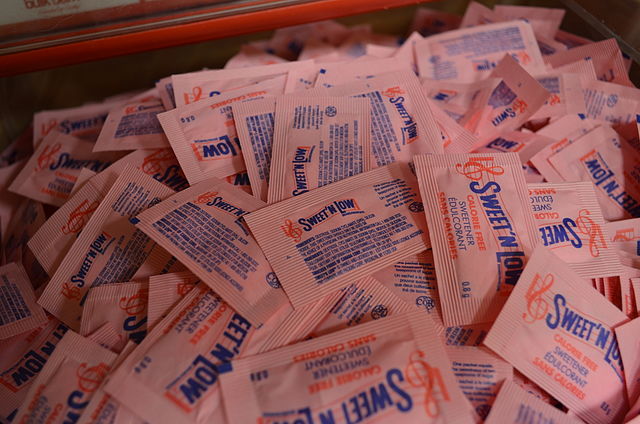Xylitol is a chemical compound with the formula C5H12O5, or HO(CH2)(CHOH)3(CH2)OH; specifically, one particular stereoisomer with that structural formula. It is a colorless or white crystalline solid that is freely soluble in water. It is classified as a polyalcohol and a sugar alcohol, specifically an alditol. The name derives from Ancient Greek: ξύλον, xyl[on] 'wood', with the suffix -itol used to denote it being a sugar alcohol.
Xylitol crystals
A sugar substitute is a food additive that provides a sweetness like that of sugar while containing significantly less food energy than sugar-based sweeteners, making it a zero-calorie or low-calorie sweetener. Artificial sweeteners may be derived through manufacturing of plant extracts or processed by chemical synthesis. Sugar substitute products are commercially available in various forms, such as small pills, powders, and packets.
Three artificial sweeteners in paper packets, coded by color: Equal (aspartame; blue), Sweet'N Low (saccharin, pink), and Splenda (sucralose, yellow). Other colors used are orange for monk fruit extract[citation needed] and green for stevia.
Cyclamate-based sugar substitute sold in Canada (Sweet'N Low)
Saccharin, historical wrapping, Sugar Museum, Berlin




